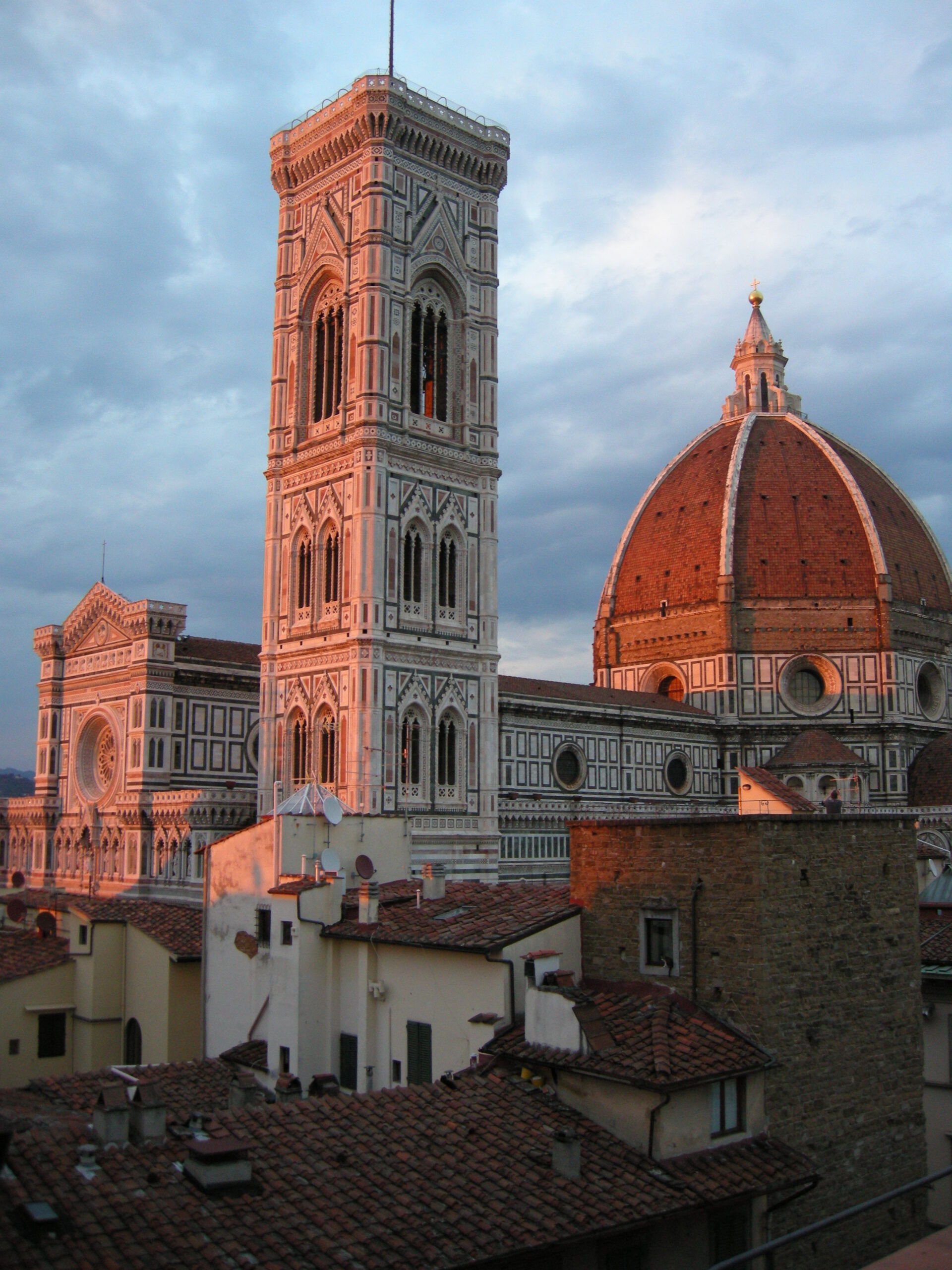Florence is dominated by the silhouette of its cathedral dome. Begun in 1420 after a public competition and completed in 1436, the dome is universally considered as a masterpiece of Renaissance architectural engineering. Art theorist Leon Battista Alberti described this marvel vividly it in the prologue of his treatise De pictura (1435):
“Who could ever be hard or envious enough to fail to praise Pippo the architect on seeing here such a large structure, rising above the skies, ample to cover with its shadow all the Tuscan people, and constructed without the aid of centering or great quantity of wood? Since this work seems impossible of execution in our time, if I judge rightly, it was probably unknown and unthought of among the ancients.”
The architect praised by Alberti, Pilippo, is of course Filippo Brunelleschi (1377-1446), traditionally considered the father of Italian Renaissance architecture. Brunelleschi’s involvement with Florence cathedral began as early as 1404, when he advised on the construction of a buttress for the structure. Around 1417 he started producing designs for the dome, for which he would eventually conceive a radically new structural design, a project so innovative that he had to devise new machinery and scaffolding techniques to be able to complete it.
Nevertheless, Brunelleschi was not the only prominent renaissance artist to be involved in the construction and design of the dome. Sculptor Lorenzo Ghiberti (1378-1455) was also involved in the dome’s design right from its inception. In 1418 and 1419 the sculptor and his assistants produced models for the dome and submitted them to the cathedral chapter. These models do not survive, but extant documents suggests that one was a large-scale structure made of small bricks, perhaps as minute and impressive as the finished dome itself.
These three models did not convince the cathedral authorities, who chose Brunelleschi’s design over Ghiberti’s sometime in spring 1420. This was not the first competition between Brunelleschi and Ghiberti: in 1401, they had both submitted designs and prototypes for the new doors of Florence’s Baptistery, eventually commissioned to Ghiberti.
Although Brunelleschi’s design for the dome was preferred to Ghiberti’s, they were both appointed to supervise the construction together with master mason Battista d’Antonio (documented 1420–39). In April Ghiberti and Brunelleschi collaborated on the production of yet another model of the structure. Although Brunelleschi is always considered as the dome’s builder and designer, he and Ghiberti worked on this project at the same salary and in comparable roles. As Ghiberti put it in his autobiography: “And especially in the building of the dome Filippo [Brunelleschi] and I were competitors for 18 years at the same salary; thus we executed the said dome.”
The situation must have changed around 1426, when Brunelleschi started receiving a higher, full-time salary for the construction, while Ghiberti’s part-time salary remained unchanged. Nevertheless, Ghiberti’s last payment for work on the dome dates to 30 June 1436, the year when the structure was completed.
References: Harold Meek, “Brunelleschi, Filippo,” Grove Art Online, Oxford University Press, http://www.oxfordartonline.com/subscriber/article/grove/art/T011773; Manfred Wundram and Gustina Scaglia, “Ghiberti,” Grove Art Online, Oxford University Press, http://www.oxfordartonline.com/subscriber/article/grove/art/T031929pg1; Leon Battista Alberti, On painting (New Haven: Yale University Press, 1966), edited by John Richard Spencer.
The Duomo of Florence Cathedral. Source: Ian Furst on Wikimedia Commons.
Florence Cathedral. Source: Salikoon Wikimedia Commons.

